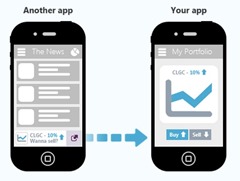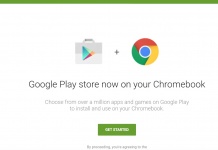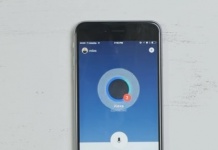 It’s funny how an article intended to be informative and instructive to one audience can be downright disturbing to another, can’t it? That’s the thought I had when I ran across this article on ReadWrite about deep links.
It’s funny how an article intended to be informative and instructive to one audience can be downright disturbing to another, can’t it? That’s the thought I had when I ran across this article on ReadWrite about deep links.
It’s fairly up-front about who it’s meant for and what it’s meant to do. As the headline puts it, “Disappearing App Users? Here’s How Deep Links Might Bring Them Back”. It’s directed at mobile-app developers, instructing them on how to incorporate deep links to their apps into web content. It’s written by the head of communications for a company that makes deep-linking tools for mobile app developers, though he talks about deep linking in general terms rather than specific to his company’s tools.
The idea is that you might browse on your smartphone to a web page with a link to Facebook, and these tools would make sure the phone is smart enough to open the Facebook app for it—or send you to the app store to install that app if you don’t have it. The thrust of the article seems to be specifically for reengaging with users who were at one time users of your app but uninstalled it, rather than attracting new users.
There is a sneaky way to verify whether or not a user has your app on their device with deep links. Using JavaScript, you can “poll” your app by making the device try to access the deep link. When there’s a response, you know the app is installed and you’re able to send users over to the deep link.
If there’s no response, you can instead send users to the appropriate app store, website, or another location to guide your user through the next step.
It goes on to talk about ways to keep track of the user so you can direct them to the right content after they install or reinstall your app, and then capturing analytics about what kind of link brought the user in, when they clicked through, and so on.
Additionally, you can report on exactly how the user arrived into your app by capturing whether or not the deep link was triggered when the user entered the app or deferred until after reinstalling. Knowing the proportion of reengaged users who came through the deep link gives you insights into whether your app is staying on the device or not. Optimizing on the ratio between users who had to reinstall and users who just hopped back into your app can be a great benefit.
The interesting thing to me here is that, from an app and content developer’s perspective, all this makes sense. You do try to want to keep your app, site, and content as “sticky” as possible so you can attract more people and keep them there. But from an end-user perspective, seeing the discussion of exactly how they want to manipulate the software on my phone is a bit of a turn-off. Especially if I’ve already decided I don’t like their app and uninstalled it. (Besides, don’t they know that prompting people to install apps from deep links is a content engagement turn-off?)

































I’m not sure I understand. As a user, would you rather see an ad for an app you already have, or have the app open to the right page? If you look at this from a customer experience perspective, it’s delivering a stronger customer/user experience, right?
The point, as it seems to me, is that when someone no longer uses your app, you want to prompt them to install it so they use it again. Which seems a bit odd to me, as if they wanted to use it, they wouldn’t have uninstalled it to begin with.